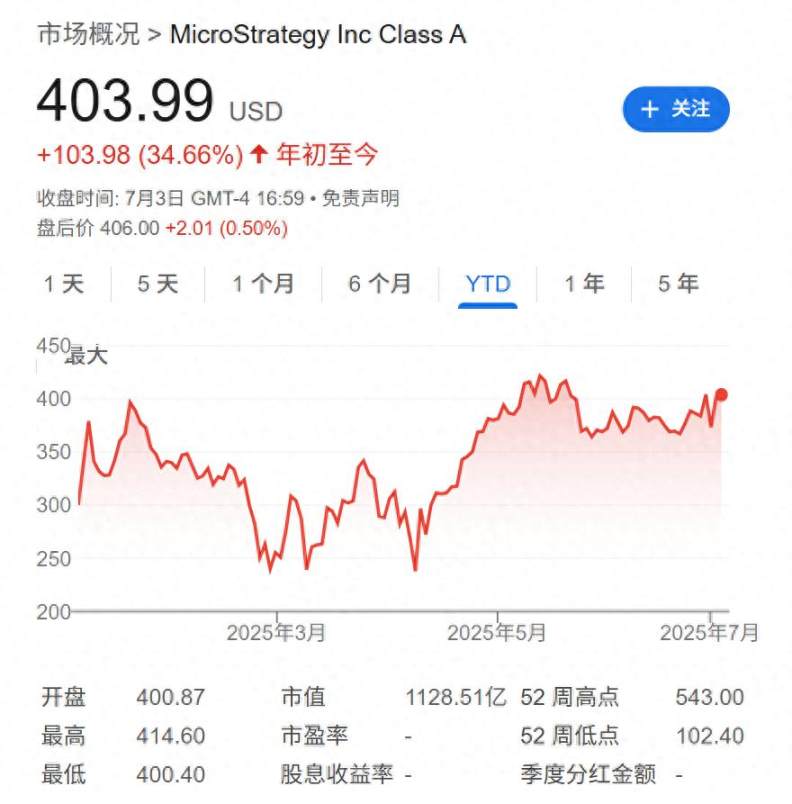An intense debate about corporate strategy, asset value, and financial innovation is unfolding on Wall Street. The core of the dispute is MicroStrategy (MSTR), led by Michael Saylor, and its aggressive strategy of accumulating large amounts of Bit using high leverage.
On one side of this confrontation is legendary short seller Jim Chanos, famous for shorting Enron, who dismisses this move as "financial nonsense"; on the other side is Saylor, who has transformed the company into a crypto giant and views it as a revolution of achieving thousand-fold returns using others' capital.
Chanos recently stated directly in a media podcast that MicroStrategy's business model is "completely unreasonable". He repeatedly emphasized his core viewpoint: as a company holding Bit, its stock price should not enjoy a premium above its asset value. This perspective directly challenges the market frenzy that has driven MicroStrategy's stock price up 210% in the past year.
In stark contrast is Saylor's strong counterattack. He believes that for many investors, buying MicroStrategy's stock is a more convenient and compliant way to invest in Bit or related ETFs. More importantly, he paints a picture for the market of amplifying returns through leverage:
"If you want to make 10x, you buy Bit. If you want to make 100x, you buy Bit with other people's money. If you want to make 1,000x, you buy Bit with other people's money, and then leverage the Bit."
So far, market performance seems to be on Saylor's side. MicroStrategy's stock price has far outperformed Bit's approximately 80% and the S&P 500's 13% gains. According to data provider S3 Partners, short sellers of MicroStrategy have suffered losses of up to $3.6 billion in the past month alone. However, this debate is not just about the views of two individuals, but reveals a new trend spreading in the corporate world and its potential risks.

Short's Core Argument: The Premium Puzzle of MSTR
Jim Chanos's challenge to MicroStrategy centers on its high valuation premium. As an investor known for discovering and shorting companies with mismatched valuations, Chanos believes investors would be better off directly purchasing Bit rather than buying a Bit-holding company's stock at an inflated price.
Data shows that as of June 30, MicroStrategy had accumulated 597,325 Bit on its balance sheet through stock and convertible debt issuance, valued at approximately $6.4 billion, making it the world's largest corporate Bit holder. However, its stock performance far exceeds the growth of its underlying assets. This phenomenon is the focus of market skeptics like Chanos, who believe this premium lacks solid logical support.
Saylor's Counterattack: The Crypto Revolution Leveraged
Facing doubts, Michael Saylor and his supporters propose two core arguments.
First is compliance and convenience, believing MicroStrategy's stock provides a compliant investment channel for investors under regulatory restrictions. Second, supporters believe that since Bit's supply is capped at 21 million, the company's continuous absorption will occupy a larger share of this scarce asset, thus supporting its stock price premium.
Saylor himself more bluntly advocates his leverage strategy. He publicly stated his contempt for Chanos's criticism, saying "I don't think he understands our business model" and predicting "if our stock rises, he will be liquidated and out".
Chanos, in turn, defines Saylor's statements as "financial nonsense", calling him "a great salesman, and that's it". This long-distance confrontation through media has become a hot topic on Wall Street.
Growing Concerns and Legal Headwinds
Despite shorts' massive losses, Chanos is not alone. In May and June this year, a federal court in Virginia accepted two investor lawsuits against MicroStrategy. According to media reports, both lawsuits allege the company misled investors about potential Bit price fluctuations' impact on its stock price.
Some analysts have also expressed concerns. Gustavo Gala from Monness, Crespi, Hardt & Co noted in recent client reports that MicroStrategy's premium might decrease due to limited interest from fixed-income investors in the company's convertible debt and preferred stocks. He wrote in early June that the company's current strategy has a "limited runway".
Imitator Wave and New Battleground
MicroStrategy's strategy is spawning an imitation wave. From Trump family-controlled media companies to popular meme stock GameStop, dozens of companies have begun to imitate Saylor's "Bit treasury" blueprint. Gala warned in a Tuesday report that "all these companies are competing for an apparently similar funding pool", intensifying competition.
According to data from Bitcoin Treasuries, listed companies added a total of 245,191 bitcoins to their balance sheets in the first half of 2025, more than double the increase in Bitcoin ETF holdings during the same period. The latest heavyweight entrant is Tom Lee, founder of Fundstrat, who will serve as chairman of BitMine Emersion Technologies (BMNR), after he and several other institutions helped the company raise $250 million for launching an Ethereum-core treasury strategy. Since the news was announced on June 30th, BitMine's stock price has soared over 30 times.
Interestingly, shorts have succeeded on another battlefield. Data from S3 Partners shows that shorting Saylor's imitators was more profitable than shorting Saylor's own company. In June alone, shorts earned $549 million by shorting the four major imitators of Strategy. This indicates that while the market shows enthusiasm for the leader, it maintains a more cautious and skeptical attitude towards its followers.








